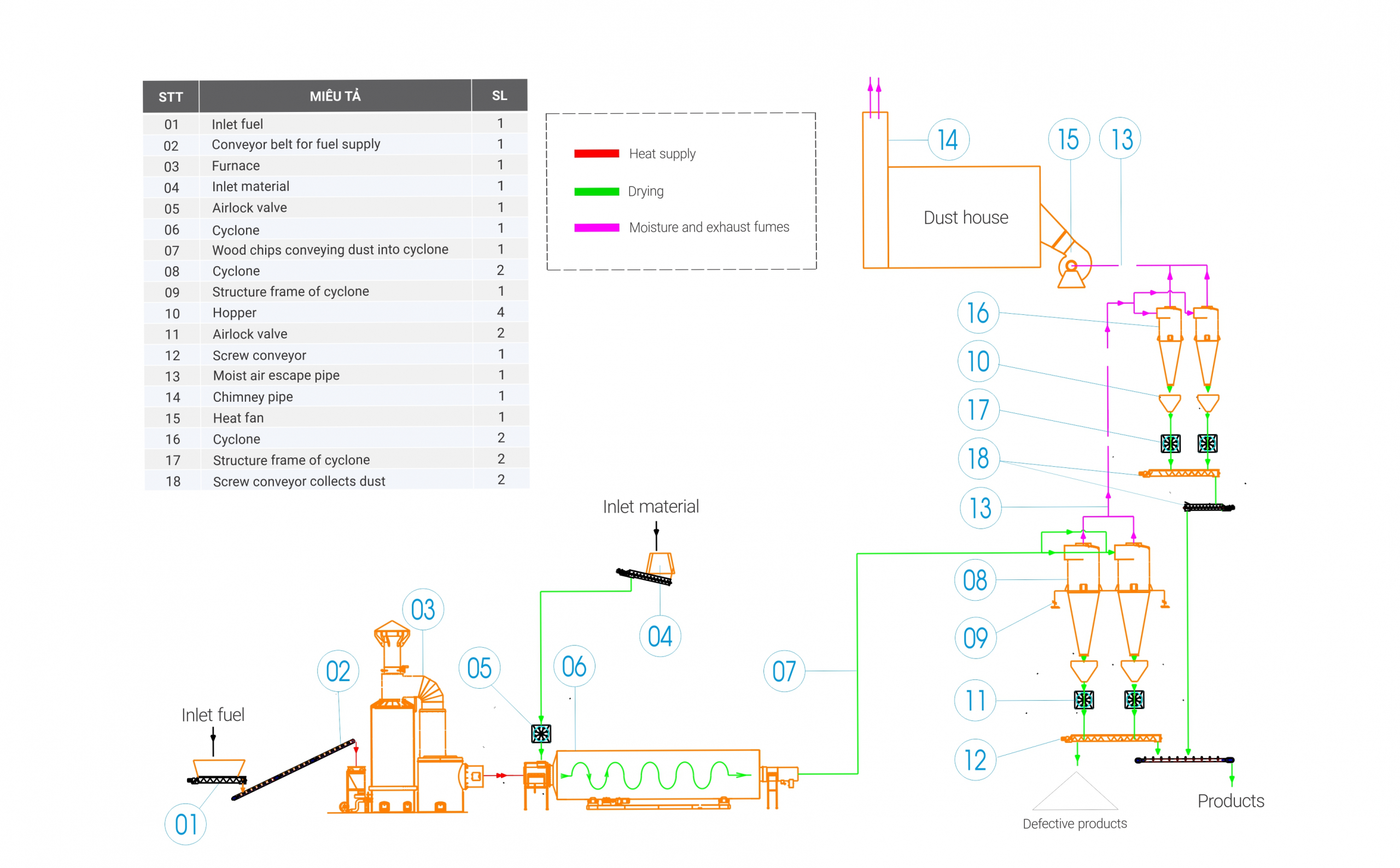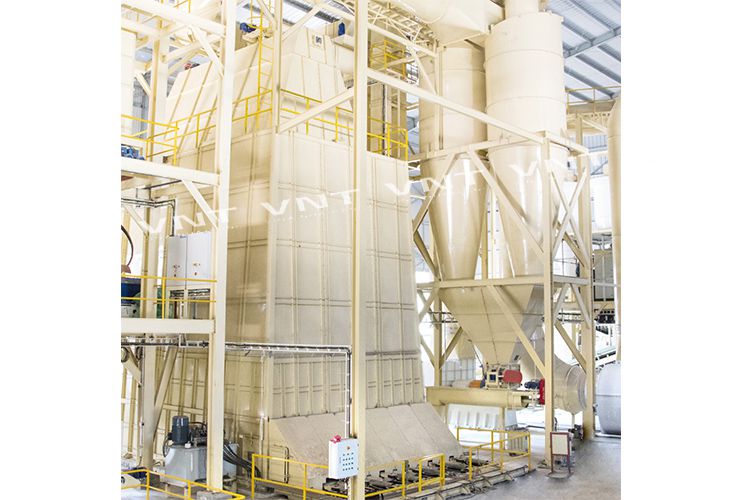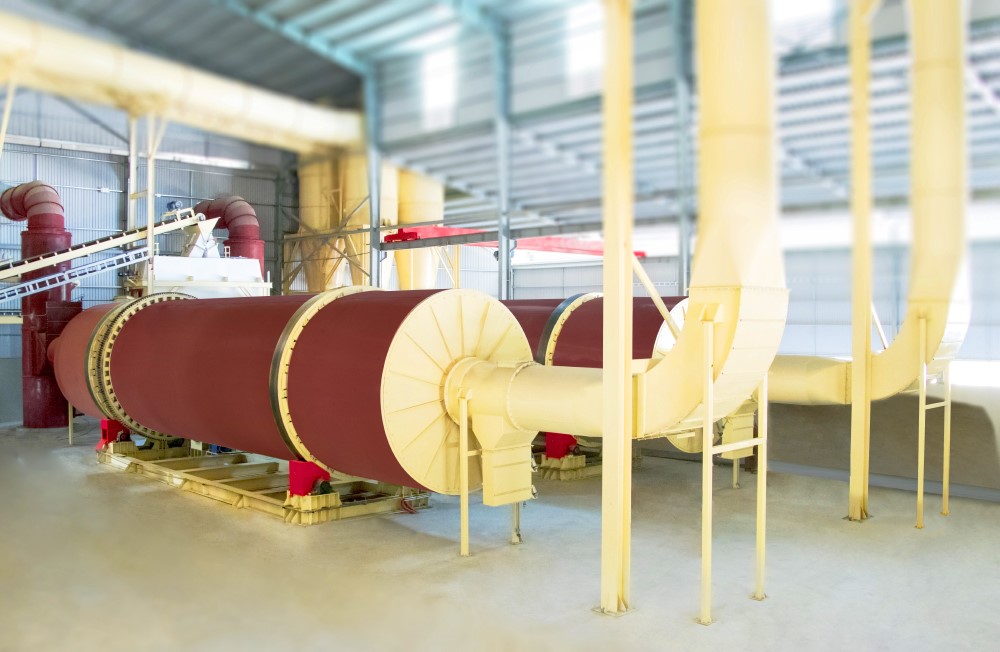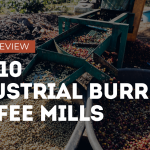In the biomass industry, efficient drying systems are essential in processes involving wood chips. A well-designed Woodchips Drying System reduces moisture content for optimal fuel quality, enhances energy efficiency, lowers emissions, and contributes to sustainable operations. With advanced drying technology, companies can achieve consistent and reliable results while adhering to environmental and safety standards.
In this post, we’ll take a deeper look at the Advanced Woodchips Drying System, examining how each component – from fuel feeding and moisture control to dust management and safety features – contributes to an optimized drying process. Whether you’re involved in biomass energy, manufacturing, or sustainable production, this system is designed to fulfill high industry standards while maintaining environmentally friendly operations.
Advanced Woodchips Drying System (Video)
Step-by-step breakdown
A Woodchips Drying System is one of the main pieces of equipment in the wood pellet production line. Its primary purpose is to reduce the moisture content of wood chips, preparing them for efficient pelletization or combustion. Properly dried wood chips are crucial for efficient combustion, reduced transportation weight, and stable storage, making them valuable as fuel or raw material in biomass energy, manufacturing, and processing industries.
In ad advanced woodchips drying system, like the one developed by Vina Nha Trang, each component works in harmony to achieve consistent, high-quality drying. Key components include the fuel feeding hopper, burner, triple pass drum dryer, primary and secondary cyclones for dust collection, and screw conveyors for material handling. Together, these parts regulate temperature, airflow, and moisture levels to create a streamlined process that meets performance and environmental standards.
Woodchips drying systems offer substantial benefits:
- Increased Fuel Efficiency: Drier wood chips provide higher energy output, making them ideal for fuel in biomass energy systems.
- Cost Savings: Lowering moisture reduces shipping weight and storage expenses.
- Environmental Compliance: With features like spark detection and dust collection, these systems help companies adhere to air quality regulations.
Fuel Feeding Hopper
The journey begins with the Fuel Feeding Hopper, a crucial entry point in the woodchips drying system. Its main role is to supply fuel – like wood chips, bark, and plywood – into the furnace. This hopper is designed to adjust the fuel feeding speed, ensuring a controlled and consistent flow of fuel that supports optimal combustion. The feeding hopper sets the foundation for an efficient drying process, providing a steady source of fuel that powers the system.
Burner
The Burner is the powerhouse of the woodchips drying system, generating the high temperatures necessary to drive moisture from the wood chips. It’s a fluid bed grate burner with impressive features:
- Heat Capacity: Delivers up to 10 MW, enabling it to handle large volumes of biomass efficiently.
- Fire Chamber Temperature: Reaches up to 1000°C, generating the intense heat required for effective drying.
- Heat Supply Temperature: Provides a controlled range of 350 – 500°C to the dryer, allowing for precise moisture reduction without overheating.
The burner supports multiple combustion materials, primarily wood chips with dimensions of 30×30 mm and a thickness of 5-10 mm. Additionally, it can handle various fuel types like bark, branches, and plywood, adding flexibility to the woodchips drying system. Designed to operate with fuels up to 50% moisture content, this burner also features:
- Fan Speed Control: Adjusts airflow according to drying temperature, ensuring efficient energy use.
- Combustion Material Adjustment: Regulates the amount of fuel supplied to the combustion chamber for consistent heat output.
- Slag Collection: Integrates a periodic slag collection mechanism to remove combustion byproducts, preventing buildup.
- Fresh Air Valve Adjustment: Controls fresh air intake to maintain temperature stability.
- Automatic Smoke Release: Automatically releases smoke if there’s a system issue, enhancing safety by reducing gas buildup.
Buffer Bin to Distribute Material
The Buffer Bin acts as a preparatory stage before the wood chips enter the dryer. It has two main functions:
- Material Feeding Speed Control: Adjusts the rate at which wood chips are fed into the dryer, ensuring a steady flow and consistent drying results.
- Moisture Display: Shows the moisture content of wood chips before they enter the dryer, giving operators real-time data to adjust drying parameters as needed. This feature adds precision to the drying process, making the woodchips drying system more effective.
Triple Pass Drum Dryer
The Triple Pass Drum Dryer is the heart of the woodchips drying system, specifically designed for high efficiency and consistency. Here’s how it works:
- Triple Pass Design: Wood chips pass through three chambers, allowing for more thorough heat exposure and ensuring even drying across all particles.
- Output Capacity: Can process up to 15 tons per hour, making it suitable for large-scale industrial applications.
- Moisture Reduction Capability: Reduces moisture content from 50% down to 12%, meeting ideal specifications for combustion or further processing.
- Heat Supply Temperature: Operates within a range of 350 – 500°C, enabling efficient drying without risking combustion.
- Exhaust Gas Temperature: Maintains the exhaust gas temperature below 80°C, which indicates efficient heat retention and minimizes energy waste.
The dryer also features moisture control to ensure the output meets the required moisture specifications, making it one of the most energy-efficient and effective components in the woodchips drying system.

Woodchips Drying System Diagram
Wood Chips Conveying Duct
Once the drying process is complete, the Wood Chips Conveying Duct takes over. This duct transports the dried wood chips from the dryer to the next stages of processing or storage. Designed for smooth and efficient movement, the conveying duct maintains a steady material flow, helping to reduce spillage and ensuring that the dried wood chips are directed efficiently to the collection or further processing areas.
Primary Cyclone
The Primary Cyclone is responsible for collecting dried material immediately after the drying process. It provides high recovery efficiency while minimizing material loss. Here’s how it supports the woodchips drying system:
- Material Collection: Consolidates the dried wood chips for further handling.
- High Recovery Efficiency: Captures a large volume of material effectively, minimizing waste.
- Anti-Clogging Design: Prevents clogging issues that could disrupt the flow, ensuring that operations continue smoothly.
- Spark Detection System: An essential safety feature, the spark detection system reduces the risk of fire and explosions by monitoring and controlling sparks within the cyclone. This is especially important in a system that handles combustible biomass materials.
Secondary Cyclone
The Secondary Cyclone plays a vital role in dust recovery and emission control within the woodchips drying system. Its primary functions include:
- Dust Recovery: Captures finer dust particles that may have escaped the primary cyclone, ensuring that emissions remain low and that particles are managed responsibly.
- Emission Minimization: Helps to maintain clean air around the system by reducing dust emissions to support environmental compliance.
- Custom Cyclone Design Options: The secondary cyclone can be adapted to different types and designs suited to wood dust collection, meeting specific requirements for biomass dust management.
Heat Fan
The Heat Fan is another crucial component that supports temperature consistency within the woodchips drying system. Its main functions include:
- Airflow Distribution: Distributes hot air throughout the system, promoting uniform drying conditions.
- Support for the Drying Process: By maintaining appropriate airflow, the fan helps optimize the drying process and ensures that each part of the system receives adequate ventilation and heat.
Dust House
The Dust House serves as a centralized collection point for any residual dust that may accumulate in the system. It has two main purposes:
- Dust Collection: Collects remaining dust particles from various stages in the drying process, helping to minimize airborne particles.
- Air Quality Maintenance: Reduces dust around the work area, contributing to a cleaner and safer environment, which is essential for both worker safety and regulatory compliance.
Chimney
The Chimney functions as the exhaust system for the woodchips drying system. Here’s how it supports the overall process:
- Exhaust Outlet: Directs exhaust gases out of the system, providing a controlled exit point for any remaining gases.
- Ventilation: Ensures that the system is properly ventilated, reducing the risk of gas buildup and supporting environmental standards for emissions.
Rotary Valve (Woodchips)
The Rotary Valve for woodchips is an essential part of material handling in the woodchips drying system. Its main functions include:
- Controlled Material Transfer: This valve enables a steady and regulated transfer of wood chips from one part of the system to another, ensuring a consistent flow that supports efficient operation.
- Airtight Seal: By preventing air or gas from entering or escaping, the rotary valve helps maintain system pressure and avoids potential air leaks, which is essential for sustaining the flow and performance of the drying process.
Screw Conveyor for Collecting Woodchips
The Screw Conveyor for Collecting Woodchips is designed specifically for the efficient transfer of dried wood chips. It plays a vital role in material management, as it:
- Transports Woodchips: This conveyor collects the dried wood chips and transports them to the designated storage or collection area.
- Consistency and Efficiency: By using a helical screw mechanism, it ensures steady movement without spillage, supporting a smooth and efficient workflow within the woodchips drying system.
Rotary Valve (Dust)
The Rotary Valve dedicated to dust collection works similarly to the woodchips rotary valve but focuses on handling dust particles. Here’s how it contributes to the system:
- Dust Collection Control: It allows controlled release of dust particles, maintaining a clean and organized flow by preventing dust from mixing with other materials.
- Airtight Conditions: By maintaining an airtight seal, this valve prevents dust from escaping into other areas, supporting overall cleanliness and safety.
Screw Conveyor for Collecting Dust
The Screw Conveyor for Collecting Dust is the final component in the woodchips drying system. It ensures that all dust particles are managed efficiently by:
- Dust Transportation: Collects dust particles that have been separated by components like the cyclones and dust house and transports them away from the main processing areas.
- Air Quality Control: By isolating and transferring dust, this conveyor helps reduce airborne particles, contributing to a cleaner and safer environment around the drying system.
Conclusion
The Woodchips Drying System brings together cutting-edge technology and industry-leading design to create a seamless, efficient, and sustainable solution for biomass drying. From precise fuel feeding and powerful triple-pass drying to advanced dust control and safety features, each component is carefully crafted to optimize performance, protect the environment, and maintain high standards for safety and quality.
Ready to enhance your biomass processing operations? Our team of experts is here to help you find the ideal drying solution for your specific needs. Contact us today to learn more about how our woodchips drying system can transform your process, improve efficiency, and meet your sustainability goals.






